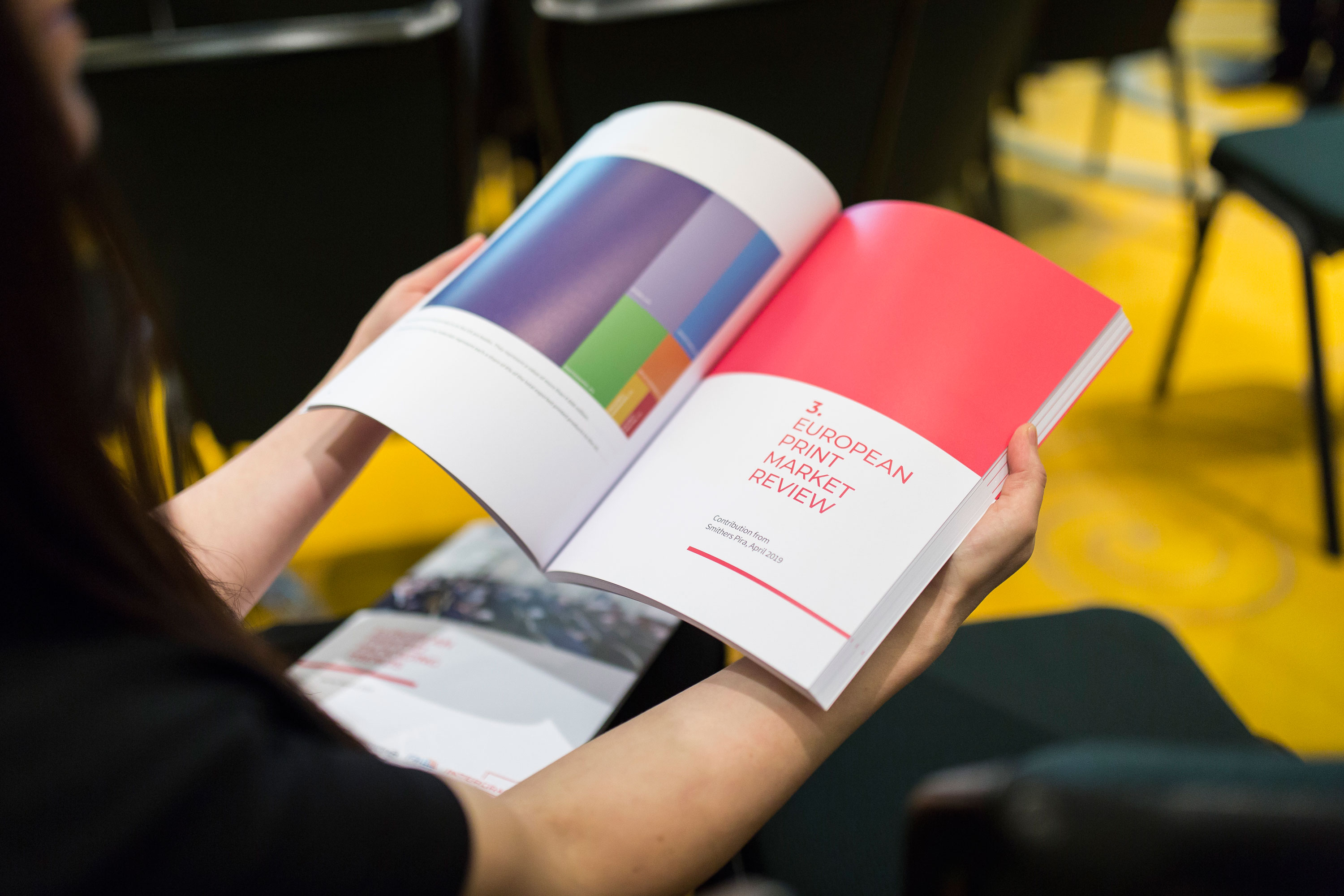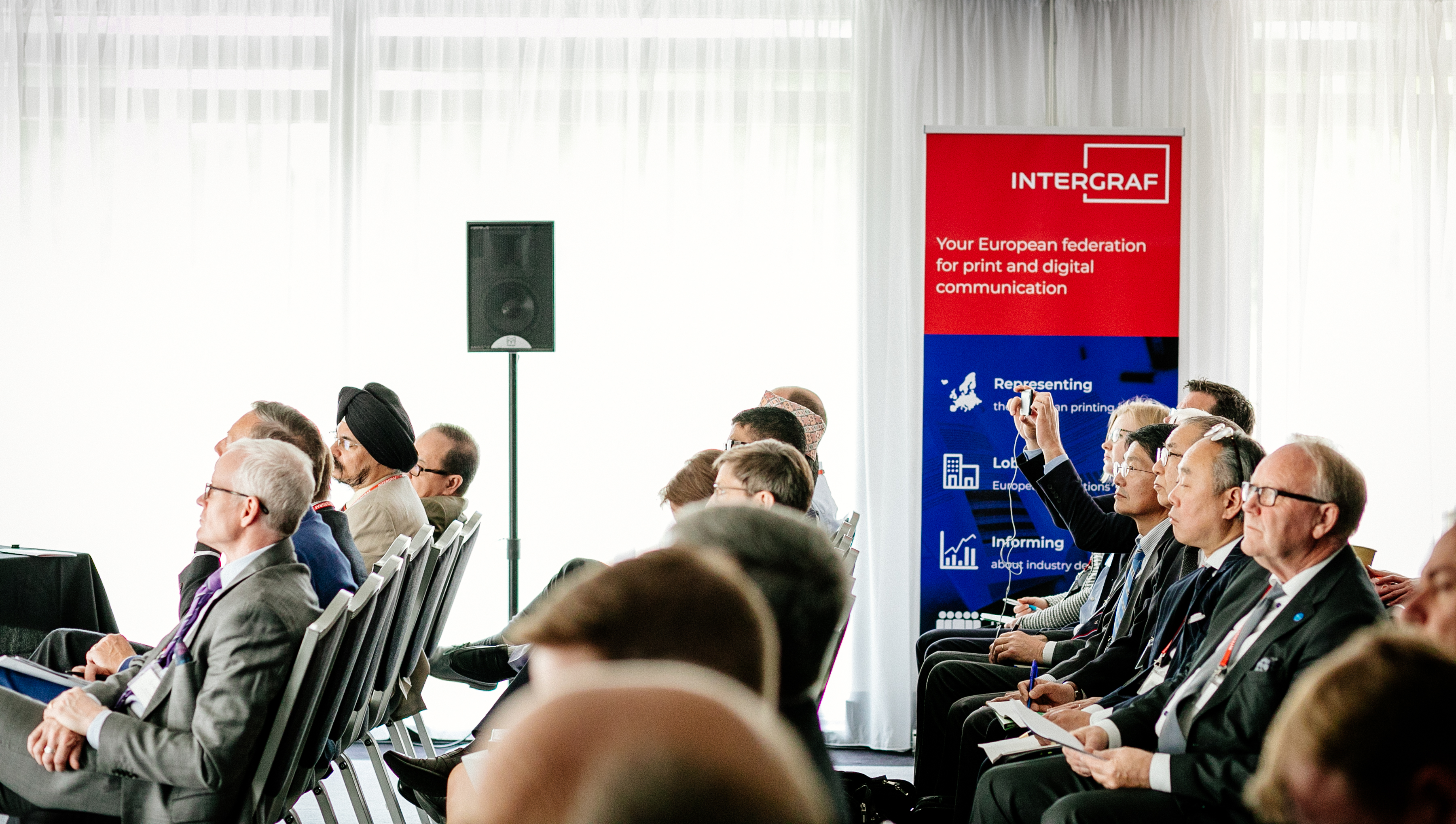How to attract a new generation of print professionals
31 August 2021

The European graphical sector
An ability to recruit the right people is a key facet of any competitive sector. To guarantee the enduring competitiveness of the printing industry, we must work together to promote the image of print. This will help to improve the recruitment potential of schools and companies by ensuring that young people – and their parents, teachers, and career advisors – are better-informed about the realities of working in print and the career opportunities it can offer. A fundamental asset of the printing industry is its workforce, and a new generation of print professionals is required to produce the products we all need.
Printing companies, like the products they produce, are everywhere and are relied upon by many sectors and citizens. The graphical industry in Europe (comprising the EU27, the UK, Switzerland, and Norway) is made up of some 112,000 printing companies which employ 640,000 people and generate a combined turnover of €82 billion. Print is an enormous sector and an important part of Europe’s economy.
Print is a key part of our culture and how we express ourselves, as well as how we ensure that everyone in society is educated, included, and engaged. The printing industry – and the world – has experienced a pivotal transformation amid digitisation. But what often goes unnoticed is that many printed products remain indispensable in a digital world. What would we do without food or pharmaceutical packaging? Without business documents, signs, labels, or home decoration? Without books, or other communications for the millions of people without digital access or tools? All of these products – and countless more – are printed and essential. Our sector is so much broader and more vital than most people realise.
The European graphical sector has changed considerably in recent decades. Likewise, companies’ skills needs are also changing. With digitisation and technological advances stimulating industrial restructuring and the rapid introduction of new business models, demand for the expertise and innovative ideas of young, entrepreneurial print professionals is growing. Attracting, hiring, and training new people is imperative. Print is a well-established and traditional sector with historical significance. But printing technologies and processes of today are far from traditional. They are highly digitised and technological. Print businesses require a dynamic workforce with a wide range of hard and soft skills that can keep up with a fast-changing environment.
The attractiveness of print
The image of print has an impact on how attractive the graphical sector is to young people. And the printing industry – in Europe and beyond – suffers from a negative image. Many potential recruits and their advice-givers are misinformed about print, believing that the industry is old-fashioned, low-tech, and not needed in a digital world. This can lead young people to not choose printing as a career path. And it is not only recruitment into companies which faces challenges; registrations to education and training courses are also decreasing. This is compounded by demographic change in the sector, which has a progressively ageing workforce. As a result, many printing companies across Europe are finding it difficult to fill available positions and this is beginning to impact their business performance and outlook.
Printers of the future
Young people (by which we mean primarily Generation Z and Millennials) have different expectations for their working life than previous generations. In many countries, Millennials are now the largest generation in the workforce (with the number of Generation Z workers due to rise rapidly as they come of age), so attracting these cohorts of people is of critical importance from a recruitment perspective. If a company cannot attract Millennials or Generation Z, they are missing out on a reservoir of potential talent – and this situation will only worsen as time passes. If they have not already done so, businesses must adapt to attract younger people and ultimately secure a bright future for the graphical sector.
This is not a simple task. But such change does not have to come at a high price. The best way to start is very straightforward:
ASK young people what they want;
LISTEN to their feedback; and
ACT on it.
Part of Intergraf’s work for the printing industry does just this. We are co-coordinating an EU-funded project, Print Your Future, which is developing tools to help companies and associations attract young people to the graphical sector. As well as this, every year we offer young print professionals in Europe the opportunity to enter the Intergraf Young Talent Award. In 2021, we asked entrants to describe their ideal working environment and suggest how a printing company could provide this. And in 2020 we asked about how young people could be attracted to the printing industry.
The information we have collected throughout these activities should be used as inspiration for companies to effect change across the European graphical sector.
So, who are Millennials and Generation Z?
Millennials are the first generation to have fully adopted digital tools into their everyday lives, and the last generation who grew up in the pre-digital world. Generation Z are ‘digital natives’ with little to no memory of life without connected devices. Millennials and Generation Z have a lot in common. They are more racially and ethnically diverse than previous generations, more politically and socially progressive, and more educated (especially women). Because of the stark differences between older and younger generations, demographic change in the workplace is having wide implications on the world of work.
What do Millennials and Generation Z expect from the workplace?
It is imperative that employers offer more than just a salary (although of course ensuring that salaries are in line with similar roles in other industries is necessary for print careers to remain attractive in a competitive marketplace). Younger generations are looking for workplaces that are connected, supportive, inclusive, respectful, diverse, and facilitate a suitable work-life balance. Hierarchical workplaces with no flexibility or individual responsibility offered to staff are a thing of the past. Workplaces of the future are diverse (think gender and racial equality at all levels) and focused on new technologies and employee development. Moreover, young people want to make an impact – for example by supporting social causes and promoting sustainability and environmental protection. Businesses must be honest, open, and explicitly value driven.
How can companies adapt to attract this new type of employee?
The printing industry has some major selling points.
Firstly, print is a sustainable sector that uses and produces renewable, recyclable raw materials and products. European forests are sustainably managed and paper recycling in Europe is the highest in the world (and rising). Companies who really embrace this and champion sustainability throughout their business will reap the benefits. Many businesses already mainstream sustainability throughout their day-to-day operations. Be vocal about this! Environmental achievements should be regularly communicated internally and externally – such efforts and messages are important for both staff and customers.
Secondly, print may be a traditional sector, but it has evolved to use new technologies and processes. Printers process the (digital) artwork and data used to create and distribute printed products – and many of these products are digitally integrated and innovative (for example: printed electronics). Robotics are used, workflows are digital, and interaction with customers takes place online. Moreover, as well as physical products, many printing companies simultaneously offer digital products and services. Printers have become communication providers with the knowledge to help their customers choose the right channel for the message they wish to communicate – be that print or digital.
Printing companies offer jobs which utilise new, innovative technologies. But companies also need to look like the future. External communications like company websites and a competent social media presence have taken on new importance – and not only for customers. Printers are part of the creative sector, and their online presence needs to show it. Internal communications also need to embrace digital tools – email, instant messaging, and social media should all play a role. Likewise, more and more training in the graphical sector uses innovative technologies like augmented reality. Consider how such tools could be integrated into your business.
Companies can also do more.
As well as being digital and sustainable, one of the most important changes companies can make to attract younger workers is to focus on improving company culture. Young people have distinct requirements for their future workplaces.
Involve your employees in business decisions that affect them – ask for their feedback and (most importantly) act on it. This will help to foster an environment of mutual respect and collaboration between managers and employees. Focus on equality: make sure that women and ethnic minorities are supported and given opportunities. The graphical sector’s past has been male dominated, but there is no reason for this to be its future – excluding half the workforce is not a good business model. Some simple changes can make workplaces more pleasant places at which to conduct business and interact with colleagues. For example, offer staff a comfortable and well-stocked break room; monthly lunches; food trucks; wellness and sports challenges; inspiring speakers; opportunities for colleagues to socialise together; volunteering days; or other perks like dry cleaning, gym membership, or a day off on their birthday. Modest efforts can go a long way.
People also want the opportunity to learn. Give employees (of all ages) responsibility, autonomy, and chances to improve their knowledge and skills. Integrate training and development into your company culture and promote career development opportunities. Staff should know how they can progress and how to measure their success. Implement a mentoring programme. With all that younger generations have to offer; such programmes can be reciprocal. There is a wealth of industry knowledge and experience throughout the graphical sector which needs to be imparted to the next generation as older professionals begin to retire, and in return younger people can teach others about digital skills that are second nature to them.
Finally, achieving work-life balance is a priority for younger generations. Gone is the time when jobs were prioritised over a personal and family life. Employers need to be sympathetic to this. Where possible, offer flexible working arrangements – for example, working from home, or adapting working hours to fit someone’s childcare schedule. It is inevitable that some roles will not be able to offer as much flexibility as others, since certain roles rely, for example, on shift work. The industry cannot escape from this but acknowledging it and making extra efforts to ensure the wellbeing of affected employees in other ways is achievable and necessary. Showing empathy and respect for someone’s life outside of work is key.
Conclusion
We are living through a period of transformation. The digital transition has brought with it new kinds of products, marketplaces, customers, employees, and jobs. But print plays an essential role in our rapidly digitising society. With an ageing workforce edging towards retirement, there are plenty of opportunities in the graphical sector. Trained and enthusiastic young professionals are needed to take over these roles and secure the future of print. In order to recruit the best people, businesses must adapt to the changing priorities of the workforce and make sure that they offer a desirable workplace. This will not only help companies with recruitment but will also help them to retain existing staff and sell their products to a younger generation of customers.
Many print businesses in Europe have already adapted their business models in the right direction, but others continue to lag behind. For these companies, now is the time to enact change and build on the potential of our industry.
Article first published in Gráfica Cromática, Argentina, September 2021.
{K2Splitter}






